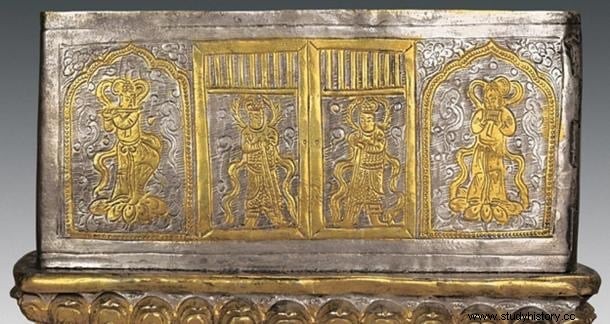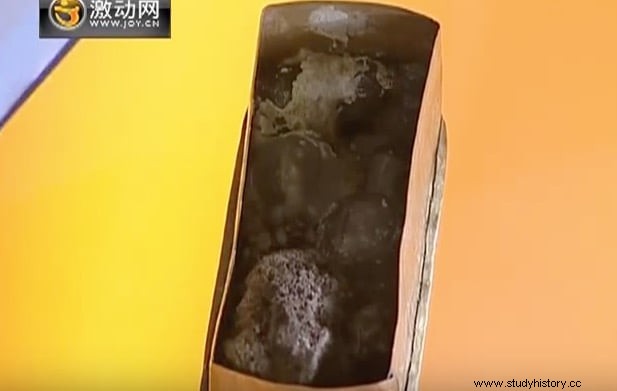In a crypt under the Qixia Buddhist temple in Nanjing, archaeologists discovered in 2010 a stupa with human remains, whose inscriptions identify them as Buddhist saints. Between them is a parietal bone of a skull which, according to what is inscribed, would be that of Siddhartha Gautama himself, the Buddha.
The stupa is made of sandalwood, covered with gold, silver and precious stones, such as agates and lapis lazuli. It was found inside another larger stone with inscriptions that date its construction to the reign of Emperor Zhenzong (997-1022 AD) of the Song dynasty. The names of the people who donated the money and materials, as well as the artisans who made it, also appear.
Although these inscriptions affirm that the cranial bone belongs to Buddha, archaeologists do not dare to affirm it outright until they examine it.

The stupa measures 117 by 45 centimeters and was found inside an iron box that was in turn inside another larger stone chest. One of the inscriptions on the latter is written by someone signing as Deming and claims to be the Master of Perfect Enlightenment, abbot of the Chengtian monastery, holder of the Purple Robe and then tells how the Buddha bone came to China.
According to this story, the body of the Buddha was cremated near the Hirannavati River in India. Then the remains of him were divided by King Ashoka (who ruled between 268 and 232 BC) into 84,000 equal parts, and they were distributed and sent to different places in the Buddhist world. China received 19 parts, including the parietal bone.
This bone was kept in a destroyed temple about 1,400 years ago. Rebuilt by Emperor Zhenzong, the relics were entombed in the new crypt on July 21, AD 1011, with a grand solemn ceremony, in a golden chest inside a silver one, both decorated with images of lotus, phoenixes and birds. guardian gods.

Next to the cranial bone, three glass jars and a silver box were placed, which contain the remains of other Buddhist saints.
The crypt was excavated by archaeologists from the Nanjing Municipal Institute of Archeology between 2007 and 2010, the latter year in which the discovery would have been made, which went unnoticed by the scientific community, even when the possible Buddha bone was exposed in Hong Kong and in Macau in 2012.
It is not the only relic of the Buddha supposedly found in China, where fragments of finger bones and even teeth associated with Siddhartha Gautama have turned up in recent years. The identification of all of them is obviously difficult beyond what the inscriptions found with some of them indicate.
